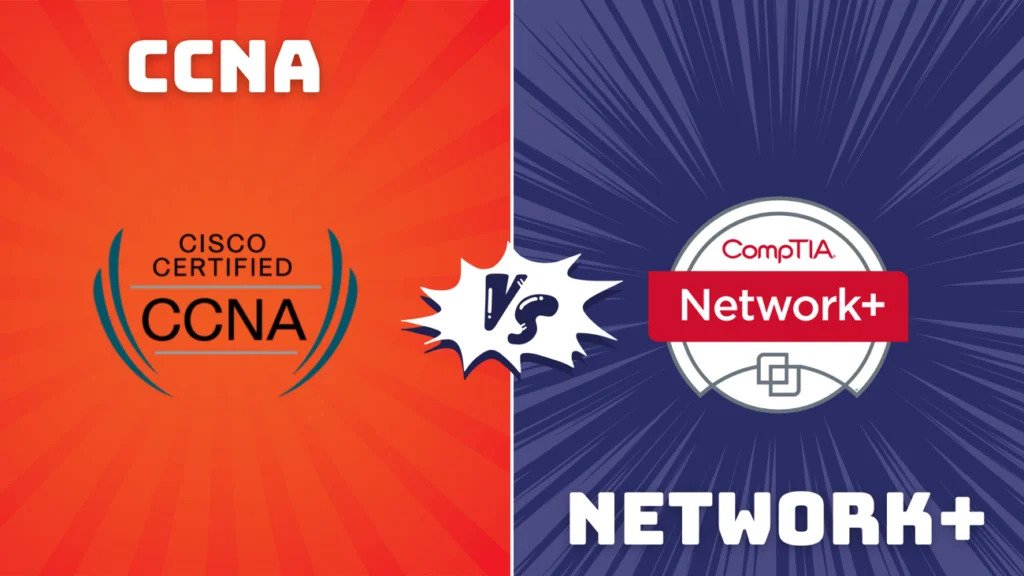Cisco Systems, Inc. is a leading provider of networking solutions worldwide, offering a comprehensive portfolio of products and services to enhance organizational connectivity, communication, and collaboration. Cisco’s network implementations are engineered to optimize efficiency, bolster security, and increase productivity across diverse industries.
By implementing Cisco’s advanced networking technologies, companies can optimize their operations, improve customer interactions, and foster innovation. The network implementations offered by Cisco cover a broad spectrum of solutions, including routing and switching systems, wireless networking infrastructure, security protocols, collaboration tools, and data center technologies. These solutions are tailored to address the specific requirements of various industries, delivering scalable and dependable infrastructure to support essential business operations.
Cisco’s network implementations prioritize performance, adaptability, and security, enabling organizations to respond effectively to evolving market conditions and maintain a competitive edge.
Key Takeaways
- Cisco network implementations play a crucial role in various industries by providing improved connectivity, security, and efficiency.
- In the healthcare industry, Cisco networks help in improving patient care by enabling seamless communication and access to critical information.
- In the education industry, Cisco network solutions enhance learning by providing reliable connectivity and access to educational resources.
- In the financial industry, Cisco network implementations are essential for securing transactions and protecting sensitive financial data.
- In the retail industry, Cisco networks streamline operations by enabling efficient inventory management and customer service.
- In the manufacturing industry, Cisco network solutions increase efficiency by enabling real-time monitoring and control of production processes.
- Across industries, Cisco network implementations have a significant impact on improving connectivity, security, and efficiency, ultimately leading to better outcomes for businesses and their customers.
Healthcare Industry: Implementing Cisco Networks for Improved Patient Care
Enhancing Patient Care through Seamless Connectivity
By implementing Cisco networks, healthcare organizations can ensure seamless connectivity across various medical devices and systems, enabling real-time access to patient data and medical records. This connectivity is essential for improving care coordination, reducing medical errors, and enhancing the overall patient experience.
Protecting Sensitive Patient Information
Cisco’s network security solutions help healthcare organizations protect sensitive patient information and comply with regulatory requirements, such as HIPAA. This ensures that patient data remains confidential and secure, maintaining trust between healthcare providers and their patients.
Streamlining Clinical Workflows
Cisco’s networking solutions enable healthcare providers to securely access and share patient information, streamline clinical workflows, and enhance the delivery of care. This leads to improved patient outcomes, increased efficiency, and reduced costs.
Education Industry: Enhancing Learning with Cisco Network Solutions

In the education industry, Cisco network solutions are playing a crucial role in enhancing learning experiences and enabling digital transformation. With the growing demand for online learning and remote education, educational institutions are turning to Cisco’s networking technologies to create a connected and collaborative learning environment. Cisco’s networking solutions provide the foundation for reliable and secure connectivity, enabling students and educators to access digital resources, communicate effectively, and collaborate on projects.
By implementing Cisco networks, educational institutions can support a wide range of learning initiatives, such as virtual classrooms, distance learning programs, and interactive multimedia content. Cisco’s networking technologies also enable schools and universities to deploy advanced e-learning platforms, virtual labs, and online assessment tools. Furthermore, Cisco’s network security solutions help educational institutions protect sensitive student data and defend against cyber threats that could disrupt the learning environment.
Financial Industry: Securing Transactions with Cisco Network Implementations
In the financial industry, the implementation of Cisco network solutions is critical for securing transactions, protecting customer data, and ensuring regulatory compliance. With the increasing volume of digital transactions and the growing threat of cyber attacks, financial institutions rely on Cisco’s networking technologies to build robust and resilient infrastructure. Cisco’s network implementations provide the performance, scalability, and security features needed to support high-speed trading platforms, online banking services, and mobile payment applications.
By leveraging Cisco networks, financial institutions can establish secure connections between branches, data centers, and cloud environments, enabling real-time access to transactional data and financial services. Cisco’s networking technologies also enable banks and financial firms to implement advanced security measures, such as encryption, access control, and threat detection, to safeguard sensitive financial information and prevent unauthorized access. Additionally, Cisco’s network solutions help financial institutions comply with industry regulations, such as PCI DSS and GDPR, by providing the necessary controls for data protection and privacy.
Retail Industry: Streamlining Operations with Cisco Networks
In the retail industry, the implementation of Cisco networks is driving operational efficiency, improving customer experiences, and enabling digital innovation. With the rise of e-commerce and omnichannel retailing, retailers are leveraging Cisco’s networking technologies to connect physical stores, online platforms, and supply chain systems. Cisco’s network implementations provide the connectivity, performance, and security required to support seamless transactions, inventory management, and customer engagement across various retail channels.
By implementing Cisco networks, retailers can create a unified infrastructure that enables real-time inventory visibility, personalized marketing campaigns, and omnichannel fulfillment capabilities. Cisco’s networking technologies also support the deployment of IoT devices, such as smart shelves and beacons, to gather real-time data on customer behavior and store operations. Furthermore, Cisco’s network security solutions help retailers protect customer payment information and prevent cyber threats that could disrupt retail operations or compromise sensitive data.
Manufacturing Industry: Increasing Efficiency with Cisco Network Solutions

Driving Operational Excellence
The implementation of Cisco network solutions is driving operational excellence, improving supply chain visibility, and enabling smart manufacturing initiatives in the manufacturing industry. With the increasing demand for automation and digital transformation, manufacturers are turning to Cisco’s networking technologies to connect production facilities, IoT devices, and enterprise systems.
Enabling Seamless Communication
By leveraging Cisco networks, manufacturers can create a connected infrastructure that enables seamless communication between machines, sensors, and control systems. This connectivity is essential for improving production efficiency, reducing downtime, and ensuring product quality in manufacturing processes. Additionally, Cisco’s networking technologies support the deployment of advanced analytics and machine learning applications that enable manufacturers to gain insights from production data and optimize their operations.
Ensuring Network Security
Furthermore, Cisco’s network security solutions help manufacturers protect critical production systems from cyber threats and ensure the integrity of manufacturing processes.
The Impact of Cisco Network Implementations across Industries
In conclusion, Cisco’s network implementations have had a profound impact on various industries by enabling organizations to improve efficiency, enhance security, and drive innovation. In the healthcare industry, Cisco networks have transformed patient care delivery by enabling secure access to medical information and streamlining clinical workflows. In the education industry, Cisco network solutions have enhanced learning experiences by providing reliable connectivity and enabling digital collaboration.
In the financial industry, Cisco network implementations have secured transactions and protected customer data by providing robust infrastructure and advanced security features. In the retail industry, Cisco networks have streamlined operations by connecting physical stores with online platforms and supporting omnichannel retailing. In the manufacturing industry, Cisco network solutions have increased efficiency by connecting production facilities with IoT devices and enabling smart manufacturing initiatives.
Overall, Cisco’s network implementations have demonstrated their value across industries by providing scalable infrastructure, reliable connectivity, advanced security features, and support for digital innovation. As organizations continue to embrace digital transformation and leverage technology to drive business growth, Cisco’s networking technologies will play a crucial role in enabling connectivity, collaboration, and security across various industries. With a focus on performance, flexibility, and innovation, Cisco’s network implementations will continue to empower organizations to adapt to changing market dynamics and achieve their business objectives in an increasingly connected world.
For more information on successful Cisco network implementations, you can check out this article on Cisco’s partners. This article provides insights into how Cisco collaborates with various partners to deliver successful network solutions across different industries. It offers valuable information on the role of partnerships in achieving successful network implementations.
FAQs
What is a Cisco network implementation?
A Cisco network implementation refers to the process of setting up and configuring a network infrastructure using Cisco networking equipment and technologies. This can include routers, switches, firewalls, and other networking devices to create a secure and efficient network for an organization.
What are some industries that have successfully implemented Cisco networks?
Various industries have successfully implemented Cisco networks, including healthcare, finance, education, retail, manufacturing, and government sectors. These industries have leveraged Cisco networking solutions to improve their network performance, security, and scalability.
What are the benefits of implementing a Cisco network in different industries?
Implementing a Cisco network in different industries can provide benefits such as improved network performance, enhanced security, scalability, and reliability. It can also enable organizations to streamline their operations, support digital transformation initiatives, and adapt to evolving business needs.
What are some successful case studies of Cisco network implementations in different industries?
Successful case studies of Cisco network implementations in various industries include healthcare organizations improving patient care with secure and reliable networks, financial institutions enhancing data security and compliance, educational institutions supporting remote learning and collaboration, and retail businesses optimizing customer experiences with robust network infrastructure.
How can organizations ensure a successful Cisco network implementation?
Organizations can ensure a successful Cisco network implementation by conducting thorough planning, engaging with experienced Cisco network engineers, performing comprehensive testing, and providing adequate training for IT staff. It is also essential to align the network implementation with the organization’s business goals and objectives.














